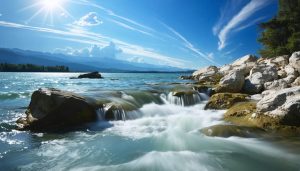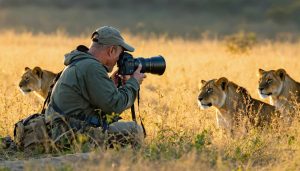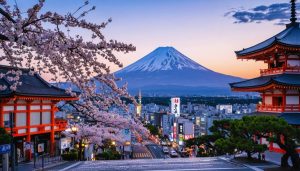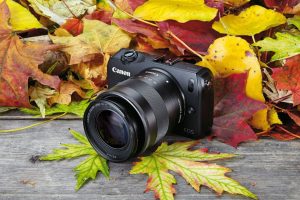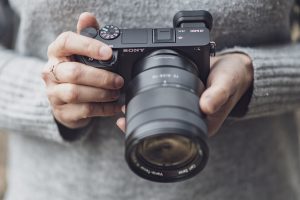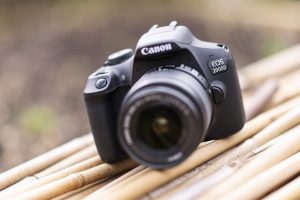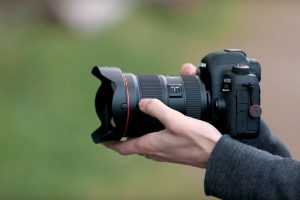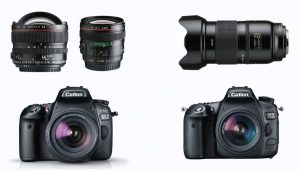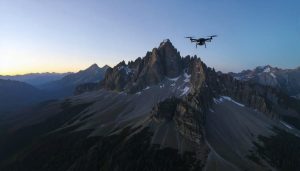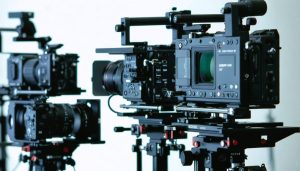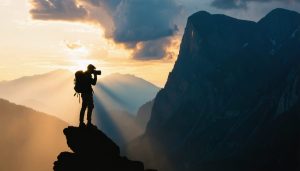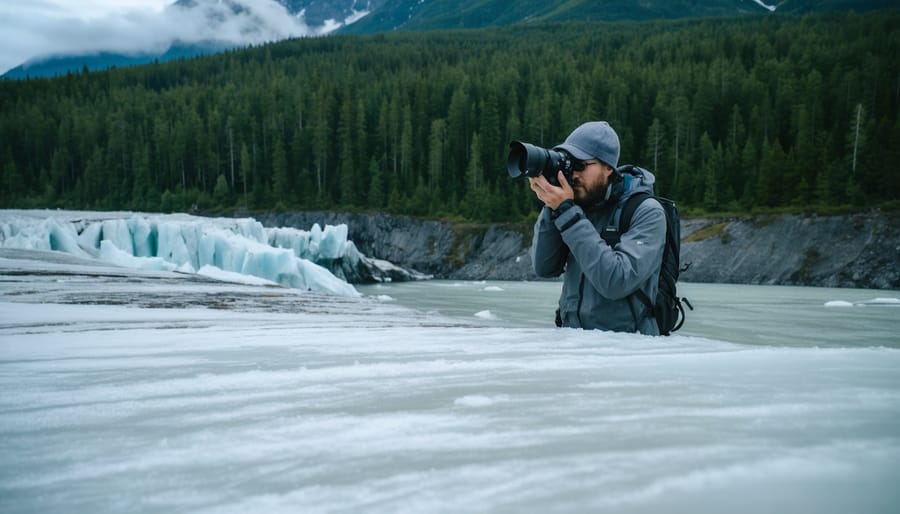
Through the lens of a camera, climate change transforms from abstract statistics into visceral reality. As glaciers retreat and landscapes transform, photographers stand at the forefront of documenting our planet’s most dramatic environmental shifts. This visual storytelling carries unprecedented power to spark action and awareness, making climate change photography one of today’s most critical documentary pursuits.
Capturing climate change demands both technical mastery and deep environmental understanding. The challenge lies in photographing subtle changes – receding shorelines, altered migration patterns, and shifting weather phenomena – while crafting compelling narratives that resonate with viewers. Whether documenting the stark reality of melting polar ice caps or the nuanced impact on local ecosystems, each frame must balance artistic vision with scientific accuracy.
The most impactful climate change photography combines three essential elements: timing, perspective, and context. Long-term projects tracking specific locations over months or years reveal gradual transformations. Aerial and drone photography offer revealing before-and-after comparisons of landscape changes. Meanwhile, intimate portraits of affected communities and wildlife bring human and ecological stories into sharp focus.
For photographers venturing into this field, the mission extends beyond creating striking images. Each photograph serves as a visual record for future generations, a tool for scientific research, and a catalyst for environmental awareness. This intersection of artistry and activism makes climate change photography one of the most purposeful applications of the medium in our time.
Essential Gear for Climate Impact Photography
Weather-Resistant Camera Bodies
When photographing extreme weather conditions, your camera needs to be as resilient as your determination. Professional-grade weather-sealed bodies like the Nikon D850 and Canon EOS R5 offer exceptional protection against moisture and dust, making them ideal for climate documentation. These cameras feature robust magnesium alloy construction and comprehensive weather sealing around buttons, dials, and compartment doors.
For photographers on a tighter budget, the Pentax K-70 stands out as a weather-resistant option that won’t break the bank. Its sealed body can handle rain, snow, and dusty conditions admirably. Remember that weather resistance isn’t the same as waterproofing – always use additional protection like rain covers when shooting in heavy precipitation.
To maximize your camera’s durability, pair it with similarly weather-sealed lenses and keep silica gel packets in your camera bag to combat humidity. Consider investing in a sturdy camera cage or housing for extra protection during extended outdoor shoots. Regular maintenance, including checking and replacing weather seals, will ensure your gear remains reliable in challenging environmental conditions.
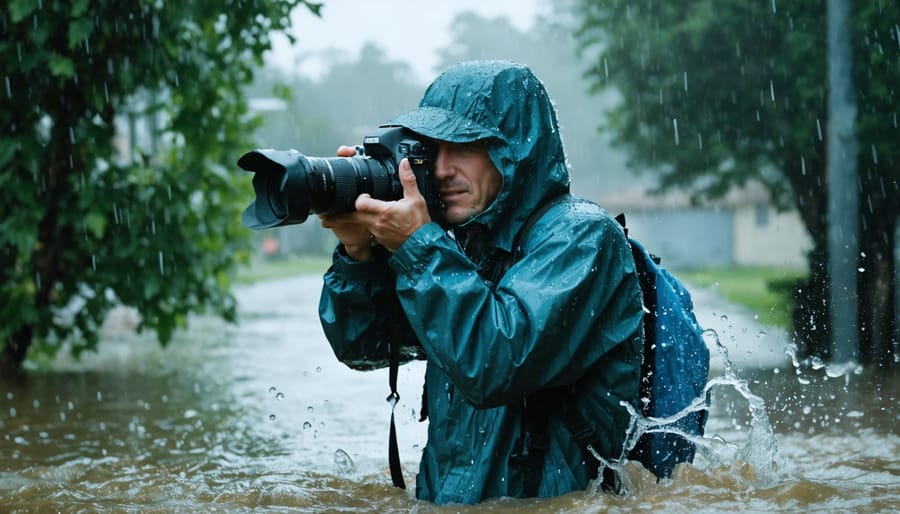
Lens Selection for Environmental Documentation
Selecting the right lens for climate change photography requires careful consideration of your subject matter and shooting conditions. For wide-reaching environmental scenes like retreating glaciers or drought-affected landscapes, a wide-angle lens (16-35mm) proves invaluable. These lenses capture the grand scale of environmental changes while maintaining context and perspective.
When documenting specific details like melting ice formations or changes in flora, a versatile medium zoom lens (24-70mm) offers excellent flexibility. This range allows you to switch between broader contextual shots and more intimate environmental details without changing lenses in potentially harsh conditions.
For wildlife affected by climate change or distant subjects like calving glaciers, a telephoto lens (70-200mm or longer) becomes essential. These lenses provide the reach needed while maintaining a safe distance from potentially dangerous situations or sensitive environments.
Consider weather-sealed lenses when possible, as climate photography often involves challenging conditions like extreme temperatures, moisture, or dust. A macro lens can also be valuable for capturing small-scale evidence of environmental change, such as dried-out soil patterns or affected insects and plants.
Keep in mind that lighter lenses might be preferable when trekking to remote locations. A quality zoom lens covering multiple focal lengths can reduce the need to carry several prime lenses, making your kit more manageable during long documentary sessions.
For time-lapse sequences documenting gradual environmental changes, standard prime lenses (35mm or 50mm) offer consistent results and typically better performance in low-light conditions. Their fixed focal length ensures identical framing across extended periods, crucial for showing environmental changes over time.
Technical Considerations and Camera Settings
Time-Lapse Techniques
Time-lapse photography offers a powerful way to visualize climate change’s gradual impact on our environment. By capturing images at regular intervals over extended periods, photographers can compress months or years of environmental changes into compelling sequences that tell compelling stories about our changing planet.
To begin, select a stable location for your camera that you can reliably access over time. Consider using weatherproof camera housing and a robust tripod system that can withstand extended outdoor exposure. Many photographers opt for solar-powered setups with weatherproof external battery packs for long-term installations.
Your interval settings will depend on the type of change you’re documenting. For glacial retreat, monthly captures might suffice, while documenting seasonal changes in vegetation might require weekly or daily shots. Combine these with long exposure techniques during each capture to add atmospheric elements like cloud movement or water flow.
Camera settings should remain consistent throughout the project. Use manual mode to maintain identical exposure settings, and consider shooting in RAW format for maximum post-processing flexibility. GPS tagging is essential for precise location documentation, especially for long-term projects where exact positioning is crucial.
For best results, photograph during the same time of day to maintain consistent lighting conditions. Golden hour often provides the most dramatic results, though midday shots might better serve scientific documentation purposes. Remember to maintain detailed records of your shooting schedule, weather conditions, and any environmental events that might impact your sequence.
In post-processing, ensure each frame aligns perfectly using specialized software. This attention to detail will result in smooth, professional time-lapse sequences that effectively communicate environmental change to your audience.
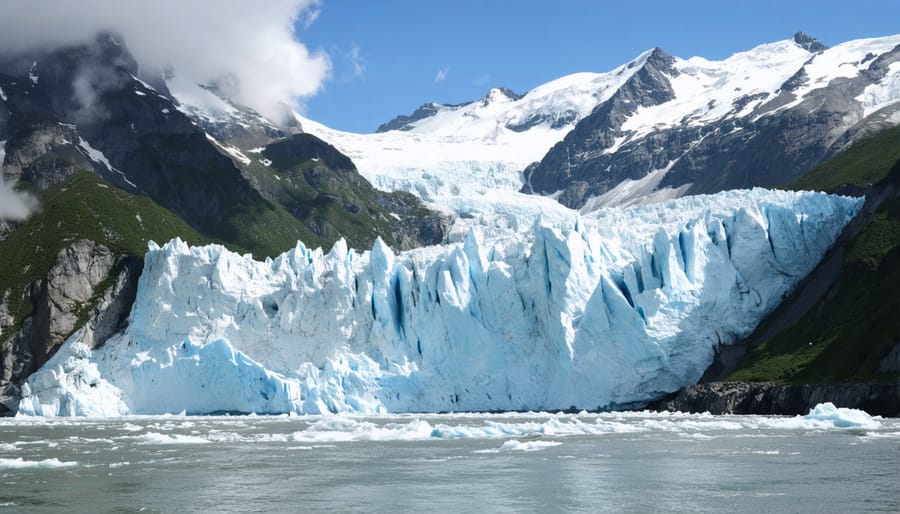
Exposure Challenges in Extreme Conditions
Capturing climate change through photography often means working in extreme weather conditions and dealing with challenging exposure situations. From documenting melting glaciers in harsh Arctic light to photographing drought-stricken landscapes under intense sunlight, managing challenging lighting conditions requires both technical skill and quick thinking.
In bright, snow-covered environments, your camera’s meter can be easily fooled, typically underexposing by 1-2 stops. To combat this, use exposure compensation of +1 to +2 stops to maintain detail in the whites while avoiding that muddy gray look. Conversely, when shooting dark storm clouds or pollution-heavy skies, you might need to dial in negative exposure compensation to preserve the ominous mood without losing cloud detail.
Working in extreme temperatures presents additional challenges. Cold conditions can drain batteries quickly, so always carry spares close to your body for warmth. In hot, dusty environments, minimize lens changes to prevent sensor contamination, and use neutral density filters to maintain slower shutter speeds when needed.
High-contrast scenes, common when photographing environmental impacts like forest fires or industrial emissions against bright skies, require careful exposure balance. Consider using graduated neutral density filters or bracketing your exposures for HDR composition later. This helps retain both highlight and shadow detail crucial for conveying the full story.
For rapidly changing conditions, such as approaching storms or shifting light on melting ice sheets, switch to matrix/evaluative metering and keep an eye on your histogram. This ensures you’re capturing the full range of tones while maintaining the dramatic atmosphere that makes climate change photography so powerful.
Composition Strategies for Impact
Before and After Shots
Before and after photography is one of the most powerful techniques for documenting climate change, offering stark visual evidence of environmental transformation over time. To capture compelling comparison shots, start by selecting specific locations that show visible signs of environmental change, such as glaciers, coastlines, or forests affected by drought.
The key to successful before and after sequences lies in precise documentation. Record exact GPS coordinates, camera position, focal length, and time of day for your initial shot. Many photographers find success using reference points like distinctive rocks, buildings, or tree formations to ensure precise alignment when returning to the location.
For maximum impact, try to maintain consistent conditions between shots. Photograph during the same season and similar weather conditions when possible. This helps viewers focus on the environmental changes rather than getting distracted by variations in lighting or seasonal differences. Consider using a tripod marked with your exact shooting position and height for future reference.
Digital overlays can enhance your presentation. Many photographers create split-screen compositions or sliding comparison tools that allow viewers to interact with the images. Time-stamped metadata is crucial – always record the exact date and maintain detailed location notes for each shoot.
Remember that meaningful environmental changes often occur over extended periods. Consider establishing a long-term project with regular visits to your chosen locations, creating a documented timeline of environmental transformation that tells a compelling visual story.
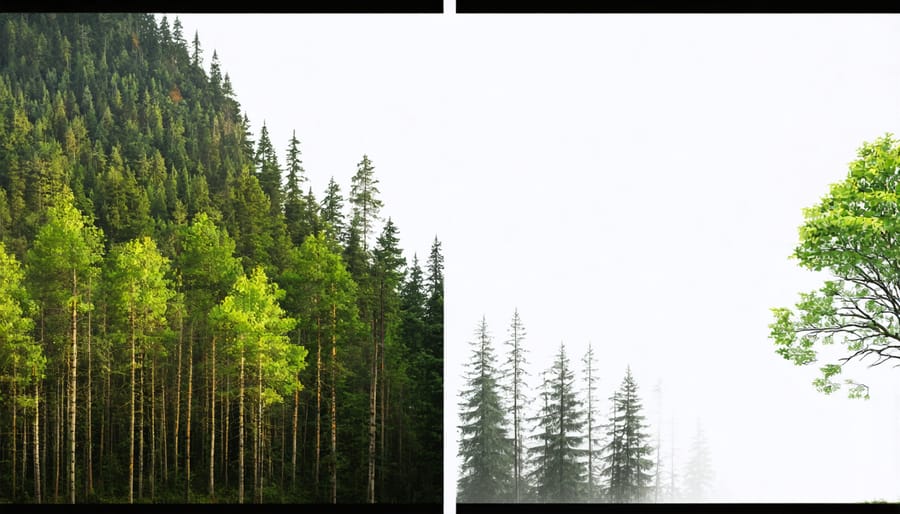
Human Elements in Environmental Stories
While documenting environmental changes is crucial, incorporating human elements into climate change photography can create powerful emotional connections that resonate with viewers. The human face of climate change tells compelling stories that statistics alone cannot convey.
Consider photographing local communities affected by environmental changes – farmers dealing with drought, coastal residents facing rising sea levels, or indigenous peoples adapting to changing landscapes. These personal narratives help viewers relate to the broader impact of climate change on a human scale.
When capturing human subjects, focus on authentic moments rather than staged poses. Document their daily activities, challenges, and adaptations to environmental changes. A farmer looking over parched fields or a fisher examining empty nets can speak volumes about the real-world impacts of climate change.
Include environmental portraits that show people in their changing environments. Frame your subjects within the context of their surroundings – perhaps standing beside a retreating glacier or in front of their flood-damaged home. This approach helps viewers understand both the scale of environmental changes and their direct impact on communities.
Remember to approach these situations with sensitivity and respect. Always obtain proper consent and take time to understand your subjects’ stories. The goal is to create images that not only document environmental changes but also inspire empathy and action through the power of human connection.
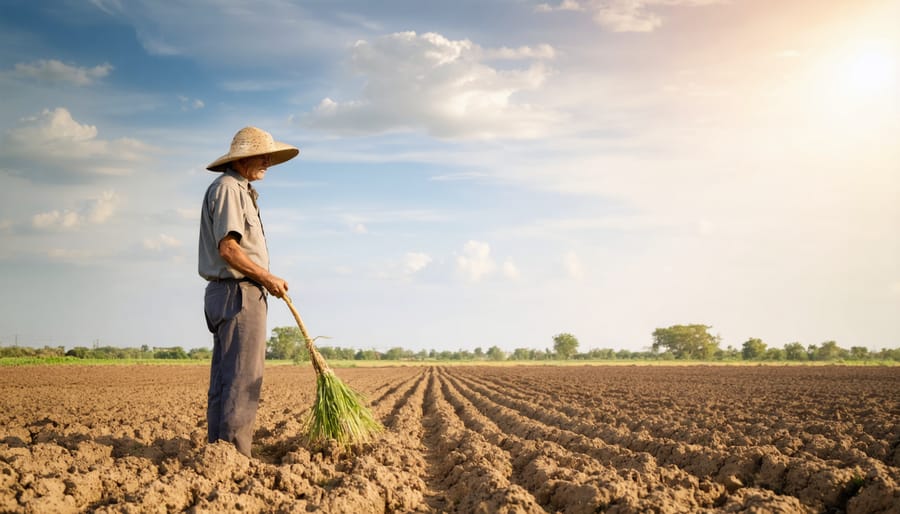
Post-Processing for Environmental Documentation
When documenting climate change through photography, post-processing requires a delicate balance between enhancing visual impact and maintaining documentary integrity. The golden rule is simple: your adjustments should clarify the story, not alter it.
Start with basic corrections like exposure and white balance to ensure your images accurately represent the scene. When photographing melting glaciers, for instance, maintaining the true color of the ice is crucial for scientific accuracy. Subtle contrast adjustments can help emphasize texture in drought-cracked earth or highlight the devastation of deforestation, but avoid dramatic HDR effects that might sensationalize the subject.
Color accuracy is paramount. While it might be tempting to boost saturation to make pollution-tinged sunsets more dramatic, restraint serves your purpose better. Instead, focus on clarity adjustments to bring out important details like smoke patterns from forest fires or the extent of coral bleaching.
Consider maintaining a consistent processing style across related images when documenting changes over time. This helps viewers focus on the environmental changes rather than variations in editing. When processing before-and-after shots of the same location, ensure both images receive similar treatment to maintain credibility.
Always preserve your original files and document any significant adjustments made. This transparency is especially important if your images might be used for research or journalism. Consider including processing notes in your metadata, particularly for long-term documentation projects.
For sharing on social media, you might need to create versions with slightly more punch to catch viewers’ attention, but maintain a separate edit for documentary purposes. Remember that your goal is to inform and inspire action, not to create sensational imagery that might undermine the serious nature of climate change documentation.
When batch processing similar images, create presets that maintain consistency while respecting the unique characteristics of each scene. This approach saves time while ensuring your body of work remains cohesive and truthful to the environmental stories you’re telling.
Building a Climate Change Photo Project
Creating a compelling climate change photo project requires careful planning, consistent documentation, and a clear narrative thread. Start by identifying a specific focus area – whether it’s coastal erosion, deforestation, or changing weather patterns in your local community. This targeted approach helps create a more impactful story than trying to capture every aspect of climate change simultaneously.
Begin by researching your chosen topic thoroughly and documenting natural habitats before visible changes occur. This establishes your baseline imagery and provides crucial context for future photographs. Create a shot list that includes both wide environmental shots and intimate details that illustrate your story’s key points.
Consider incorporating these essential elements into your project:
1. Time-based documentation: Return to the same locations at regular intervals to capture changes over time. Use consistent lighting conditions and camera positions to make comparisons more effective.
2. Human elements: Include images of people affected by or responding to climate change. This adds emotional depth and helps viewers connect with your message.
3. Before-and-after pairs: When possible, match historical photos with current conditions from the same vantage point.
4. Supporting details: Document related data through creative visualization – think melting glaciers alongside temperature graphs or rising tide markers.
Organize your project with a clear structure. Create separate folders for different locations or themes, and maintain detailed metadata including dates, locations, and relevant environmental conditions. This documentation becomes invaluable as your project grows.
Remember to vary your perspective – combine aerial shots showing broader environmental changes with ground-level details that bring your story to life. Consider including macro photography of affected plant and animal life to illustrate subtle ecosystem changes.
As you build your project, focus on creating a cohesive visual style. While each image should stand alone as a strong photograph, the collection should feel unified through consistent processing, color treatment, and compositional approaches. This helps viewers follow your narrative without visual distractions.
Finally, consider how you’ll present your work. Whether through a photo essay, exhibition, or digital platform, your presentation should support your story’s impact while making complex environmental changes accessible to your audience.
Climate change photography stands as one of the most powerful tools we have to document and communicate the urgent reality of our changing planet. As we’ve explored throughout this article, successful environmental photography requires a unique blend of technical skill, artistic vision, and deep understanding of the subject matter.
Remember that your work as a climate change photographer goes beyond just capturing beautiful images – you’re creating visual evidence that can influence public opinion and drive meaningful action. Whether you’re documenting retreating glaciers, changing wildlife patterns, or the human impact of environmental disasters, your photographs have the potential to tell stories that words alone cannot convey.
As you embark on your climate change photography journey, focus on developing both your technical expertise and your storytelling abilities. Invest time in researching your subjects, understanding the science behind climate change, and building relationships with local communities and experts. Consider partnering with environmental organizations or contributing to citizen science projects to give your work greater reach and impact.
Most importantly, maintain your commitment to ethical photography practices. Be truthful in your documentation, respect the environments and communities you photograph, and ensure your presence doesn’t cause additional harm to sensitive ecosystems.
The time to act is now. Our planet is changing rapidly, and photographers play a crucial role in documenting these transformations. Whether you’re a professional or enthusiast, your unique perspective and dedication to capturing climate change can contribute to the global conversation and inspire action. Pick up your camera, step outside, and start telling the story of our changing world – future generations will thank you for it.


